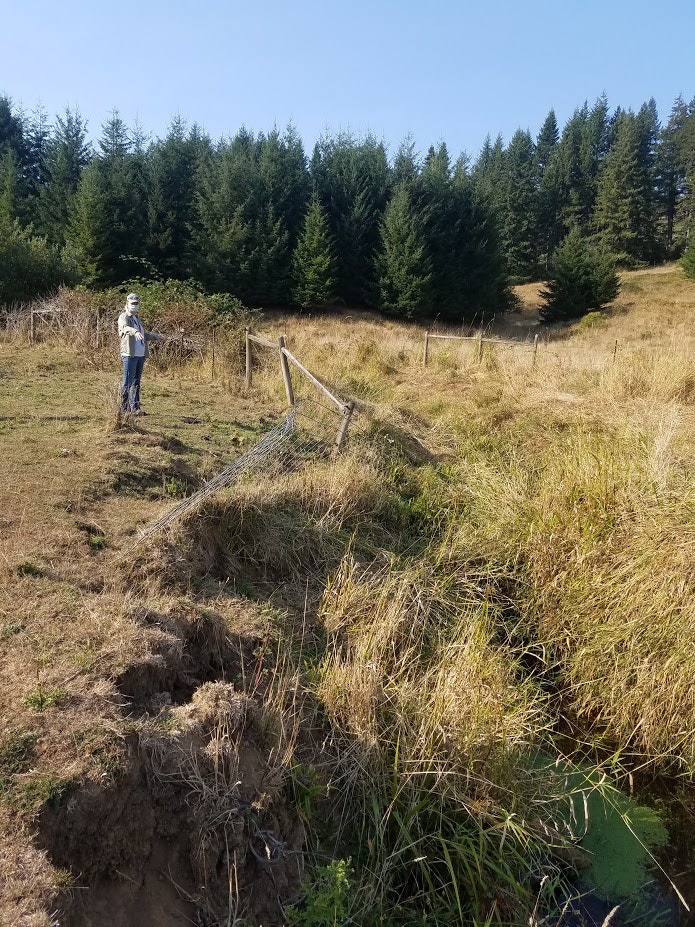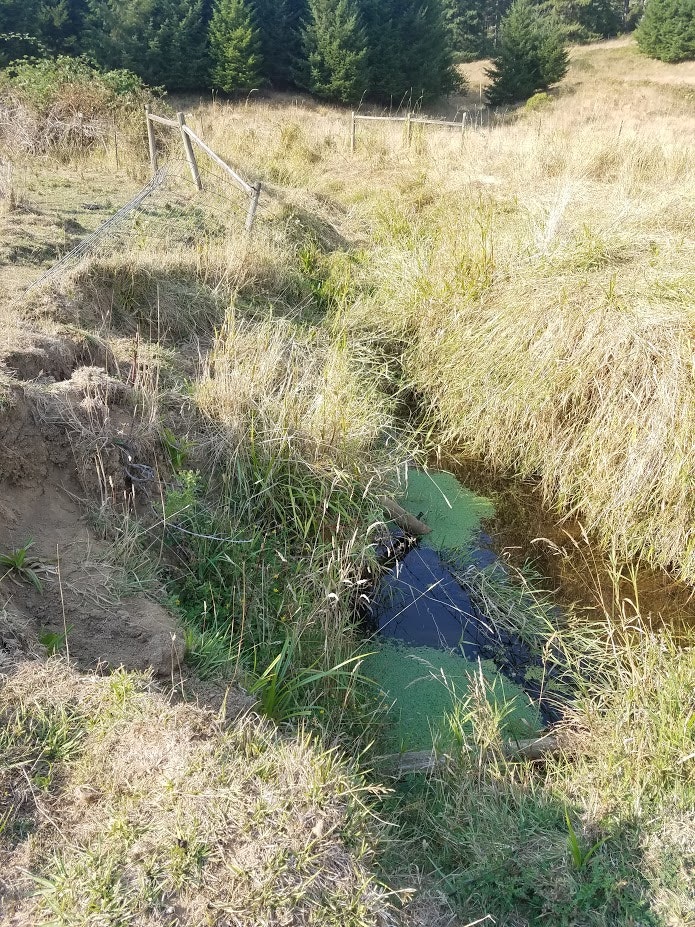Lampa Creek
This past year, Coos SWCD worked with three neighboring landowners on Lampa Creek to improve water quality, salmon habitat and grazing management. The landowners were concerned about erosion and invasive blackberries and wanted to improve the salmon habitat on their properties.
Lampa Creek is an important tributary of the Lower Coquille River for coho salmon, and it has relatively good water quality. Past tree-planting projects have helped cool the water and reduce erosion. However, there are still some problem areas and more work can always be done.
We were contacted by three neighboring landowners along Lampa Creek who wanted to improve the salmon habitat in the creek and address the problems of erosion and invasive blackberries. One of the landowners had also lost a few goats from drowning and hypothermia and wanted to keep them away from the creek.
The Coos SWCD staff visited the landowners and toured the properties to discuss the most beneficial solution. A section of the creek already had tall trees, intact banks, and very little blackberries, but other problem areas needed to be addressed. The creek had eroded the banks in a few places where there weren't enough tree roots to protect the soil.
Livestock were increasing the erosion by traveling up and down the banks. Also, a few large patches of blackberry needed to be removed. An old streamside fence was present but was at the end of its lifespan (about 20 years old) and needed to be replaced.
After applying to grant funding for the project, Coos SWCD started by pulling out the old fencing and clearing the blackberry patches. We built a streamside fence during summer 2022 with input from the landowners to facilitate their access needs. So far, the erosion has stabilized and the banks are covered in green grass. This winter, Coos SWCD staff will plant native trees along Lampa Creek inside the fence. As the trees grow, they will shade the water and provide cover for juvenile salmon, and their roots will protect the banks from future erosion. The landowners provided input on the tree species that they would like. When the trees are planted, many of them will be protected with wire cages to prevent beavers from chewing them down.
A major benefit for the landowners is that their pastures are now divided by the streamside fence. This has facilitated rotational grazing and also helped with separating the animals for breeding. Any new fencing on a ranch is an added maintenance responsibility. So...Coos SWCD designs fences to make grazing management more efficient to compensate for this. If you would like to consider streamside fencing for your property, we can help you design a system that meets your needs and protects your waterway.






